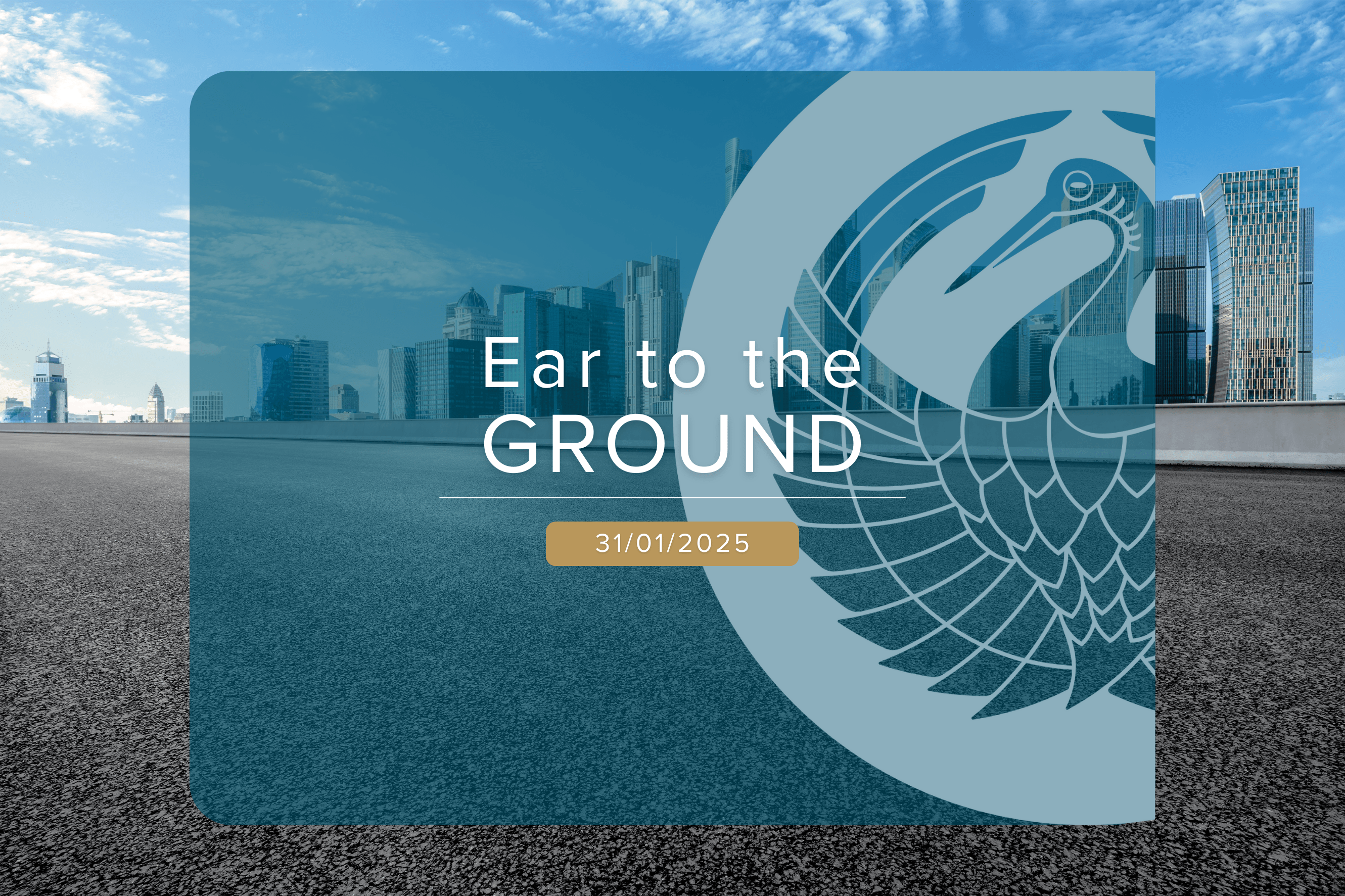Ear to the ground
31 January 2025

Monetary policy was very much on the agenda this week, with central banks meeting to set interest rates across many countries. In line with expectations the Bank of Canada cut interest rates by a further 0.25%, taking their key rate down to 3%, having now fallen by 2% in this cutting cycle. The central bank also announced that they would be bringing a halt to quantitative tightening and would recommence quantitative easing in March as they look to support economic growth.
Much to the dismay of Donald Trump, the US Federal Reserve, as expected, took the decision to keep the Fed Funds Rate at 4.25%-4.50%. The pause was to allow them to see if further progress was being seen in inflation returning to target. With economic indicators remaining relatively strong, the central bank believes that this affords them time to observe and look for further evidence before more action is potential required. With core PCE (personal consumption expenditures) inflation remaining above 2% in December, at 2.6% year on year, this perhaps vindicates their stance for now. Core PCE is the Federal Reserves preferred inflation measure.
The European Central Bank (ECB) meanwhile appears to have more scope to cut and followed the Canadians by cutting their deposit facility rate by 0.25% to 2.75%. This was again in line with expectations. This was their fifth cut since this latest rate cutting cycle commenced. Despite this, the central bank continued to iterate that they are not on a particular predetermined path and that they will continue to remain data dependent. Inflation is currently running above target but that has been attributed to energy costs and wage growth, with the latter expected to moderate. The ECB will also be conscious of economic weakness in key member nations, such as Germany and France.
The weekend has seen Donald Trump live up to his promise and bring in tariffs on Canada, Mexico and China. Trump initially signed an executive order to place duties of 25% on goods from Mexico and Canada and 10% on all imports from China. The Chinese said that it would challenge its 10% US tariff through the World Trade Organisation, believing that it violates rules. The Canadians, meanwhile, reacted quickly with retaliatory measures, by imposing a 25% tariff on US goods. Mexico meanwhile also look set to place their own tariffs along with non-tariff measures to defend themselves.
Whilst there is potential that the action taken could be inflationary, to what extent and its overall impact on all economies involved is too early to say. Numbers will be being crunched and the full reaction of all parties involved need to be understood. President Trump appears to be intent on making his mark, but what will be the full consequences? Only time will tell for certain.
This article is for information purposes only and should not be construed as advice. We strongly suggest you seek independent financial advice prior to taking any course of action.
The value of this investment can fall as well as rise and investors may get back less than they originally invested. Past performance is not necessarily a guide to future performance.
The Fund is suitable for investors who are seeking to achieve long term capital growth.
The tax treatment of investments depends on the individual circumstances of each client and may be subject to change in the future. The above is in relation to a UK domiciled investor only and would be different for those domiciled outside the UK. We strongly suggest you seek independent tax advice prior to taking any course of action.
Subscribe Today
To receive exclusive fund notifications straight into your inbox, please complete this form.